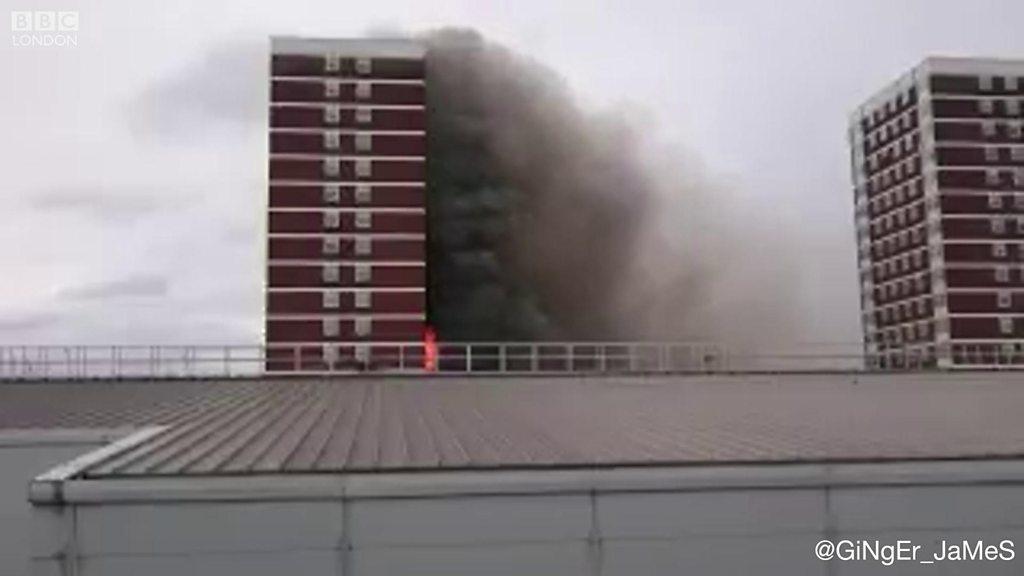Fire brigade raised fears about cladding with councils
- Published
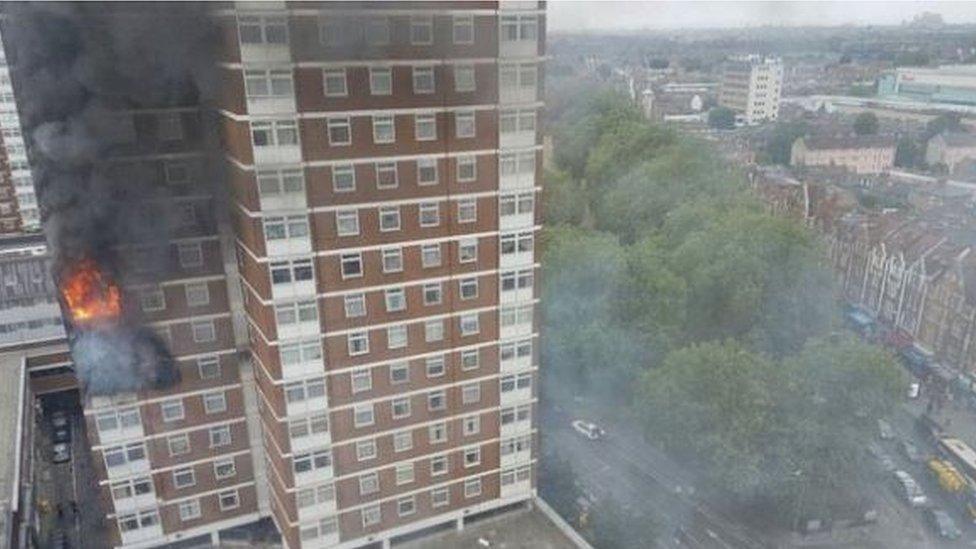
Shepherd's Court in west London fell victim to a fire in 2016
London Fire Brigade warned all 33 councils about the potential risks of external cladding on tower blocks in May this year, the BBC has learned.
It followed tests on panels from a high rise that suffered a fire last August.
The insulation panels were made up of polystyrene and plywood, and tests concluded they were the likely cause of the fire spreading up the outside.
The fire brigade urged councils to review their use and "take appropriate action to mitigate the fire risk".
External cladding has been identified as a potential factor in the rapid spread of the fire at Grenfell Tower, which is thought to have left at least 79 people dead.
It was also highlighted at the coroner's inquest into a fire at Lakanal House in Camberwell in 2009, which led to the deaths of six people, including three children.
Further tests
The fire brigade's letter followed a blaze which broke out on the seventh floor of Shepherd's Court in Shepherd's Bush, west London, on the afternoon of 19 August 2016.
The cause was a faulty tumble dryer. The fire spread up six floors along the outside of the building. No-one was injured but some people suffered from smoke inhalation.
The BBC has seen documents relating to Shepherd's Court, including a report commissioned by the fire brigade, which highlighted the external panels attached to the windows of the 1970s tower block as a probable cause of the fire's spread on the outside of the building.
The report - first obtained by Inside Housing, external magazine - was compiled by fire specialists Bureau Veritas which tested the panels beneath the windows.
The fire experts found that panels withstood initial contact with fire but as it developed further, the polystyrene foam under the thin metal sheet began to melt. The metal sheet could then fall away exposing the foam and plywood beneath.
In its letter last May, following that report, the fire brigade urged councils to consider carefully the arrangements for specifying, monitoring and approving "all aspects of future replacement and improvement of building facades" including insulation panels and in-fill panels.
The letter also stated councils should ensure the works complied to building regulations "to secure public safety and minimise fire losses".
Councils were "strongly" urged to make sure information on all replacement windows and facades was made available to fire risk assessors, and to undertake mitigation measures to "ensure any potential fire spread does not pose a risk to health and safety".
Hammersmith and Fulham Council which owns Shepherd's Court is currently conducting further tests on the panels.

The LFB letter was sent to all 33 London councils
The BBC asked Kensington and Chelsea Council - the council responsible for Grenfell Tower - what action it took in response to the letter and received the following reply.
"The Council is committed to co-operating fully with both the public inquiry and the criminal investigation.
"We do not think it is right to make comments relevant to the inquiry or subject to the investigation until this issue has been discussed with the police and the solicitors to the public inquiry once they have been appointed."
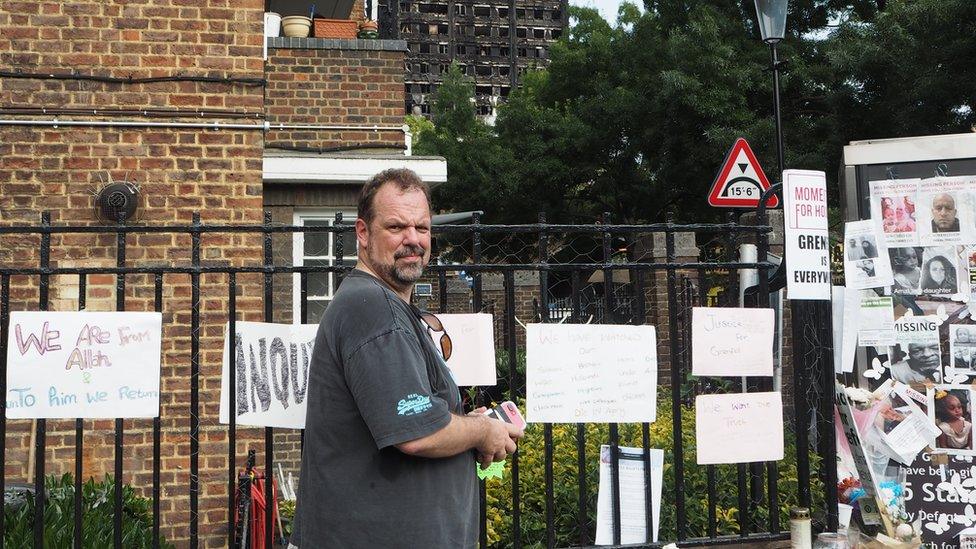
Fire safety expert Prof Arnold Dix believes current risk assessments are totally inadequate
Meanwhile, two leading fire experts have described as "complete garbage" the current system for checking fire safety in buildings, and said it had failed to prevent tragedies including the Grenfell Tower and Lakanal House fires.
Prof Arnold Dix and Arnold Tarling said the fire risk assessment system was "atrocious" and "garbage."
Mr Tarling, who has repeatedly warned about tower block safety, said the assessments can be carried out by "inexperienced and unqualified people".
He said the responsibility for fire risk assessments had been taken from fire brigades in 2005 and turned into a self-certification exercise that could be carried out by anyone.
"I see garbage day in and day out on these reports. Some of them are not fit for burning. They're complete rubbish and people's lives are depending upon reports that are totally utterly worthless, that lead to a false sense of security.
"They're done by privately employed people or maybe in-house people and are required under the fire safety order.
"The parts of the building that they cover will be all the places where a workman would work or a postman would go, including staircases, landings and boiler rooms. It excludes everything inside the flat; it excludes the external walls."
Experts have also told the BBC the risk assessments do not take account of the outside of tower blocks, including cladding.
The Fire Brigades Union described the mandatory forms as "not fit for purpose" and said that anyone could set themselves up as a fire risk assessor and that no training or qualifications were necessary.
David Sibert, an experienced fire fighter and qualified fire engineer who advises the union, told the BBC the government had failed to respond to demands from the fire industry to reform the system following the Lakanal House blaze.
"There are no controls on who can be a fire risk assessor or the competence or the skills that they should have," he said.
"Following the fire at Lakanal House the fire industry pushed the government very hard to require fire risk assessors to have certain qualifications or to be on certain registers but we didn't get any traction from government at all."

There are no controls on who can be a fire risk assessor says FBU fire safety expert David Sibert
A fire risk assessment for Shepherd's Court conducted in October 2015 - before the blaze -identified the external panels as a possible fire risk.
Hammersmith and Fulham Council, which owns the block, insisted that the fire risk assessor was "trained and qualified".
But in its response to the London Fire Brigade in November 2015, the council admitted it did not know there was any probable risk with the panels.
"We are surprised to hear of any fire risk associated with façade," the council wrote, "as we had no knowledge of this prior to your letter."
A spokesman for Hammersmith & Fulham Council said: "A fire risk assessment of Shepherd's Court was carried out in 2013 by CS Todd & Associates Ltd, who are generally considered to be leaders in the field of fire safety management.
"This was still current at the time of the successfully contained fire in the tower block in 2016, which was started by a faulty tumble dryer, and resulted in no injuries or fatalities.
"The London Fire Brigade has subsequently made recommendations, including the testing of some building materials at Shepherd's Court, and we are fully complying with their directions."
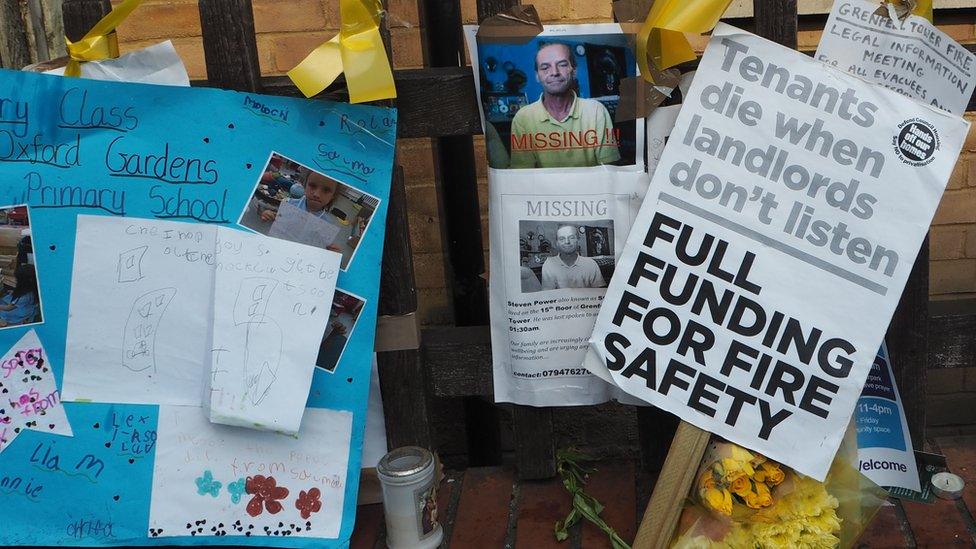
Local residents are demanding action after the Grenfell fire
Prof Arnold Dix, a disaster specialist at the University of Western Sydney, described the letter to councils as "about the strongest warning you could get".
He said: "This is yet another example of an informed authority - in this case a fire brigade - and the best thing they can do is make a warning about something that they are obviously really, really concerned about.
"It's no different in substance to what the coroner did after the 2009 fire at Lakanal House.
"The coroner made a whole lot of recommendations that weren't acted on.
"It's just another example of the toothless nature of the administration of fire safety in the UK."
A statement from the Home Office said the law clearly sets out that the person responsible for the building has a duty to undertake a fire risk assessment and put in place adequate and appropriate fire precautions or "bring in a competent fire risk assessor to undertake it".
- Published28 June 2017
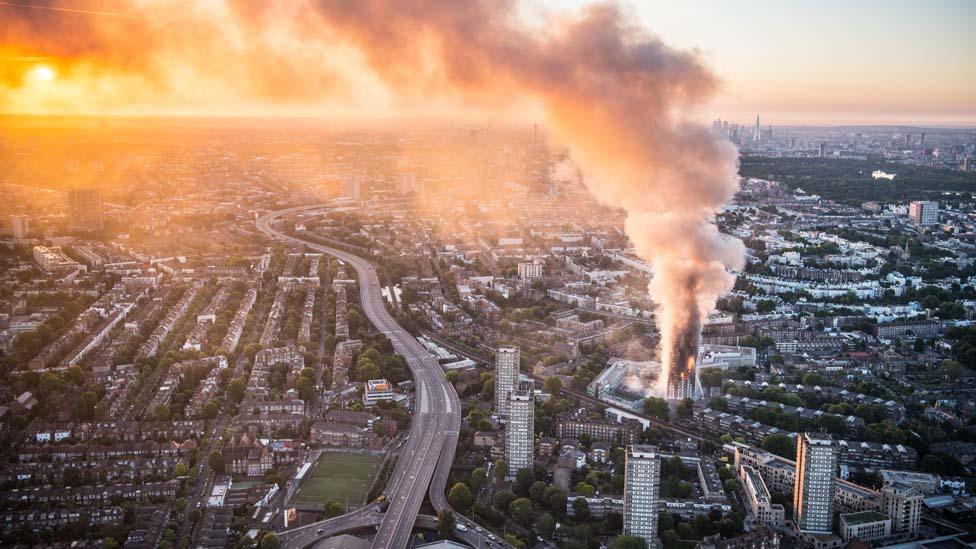
- Published27 June 2017

- Published27 June 2017
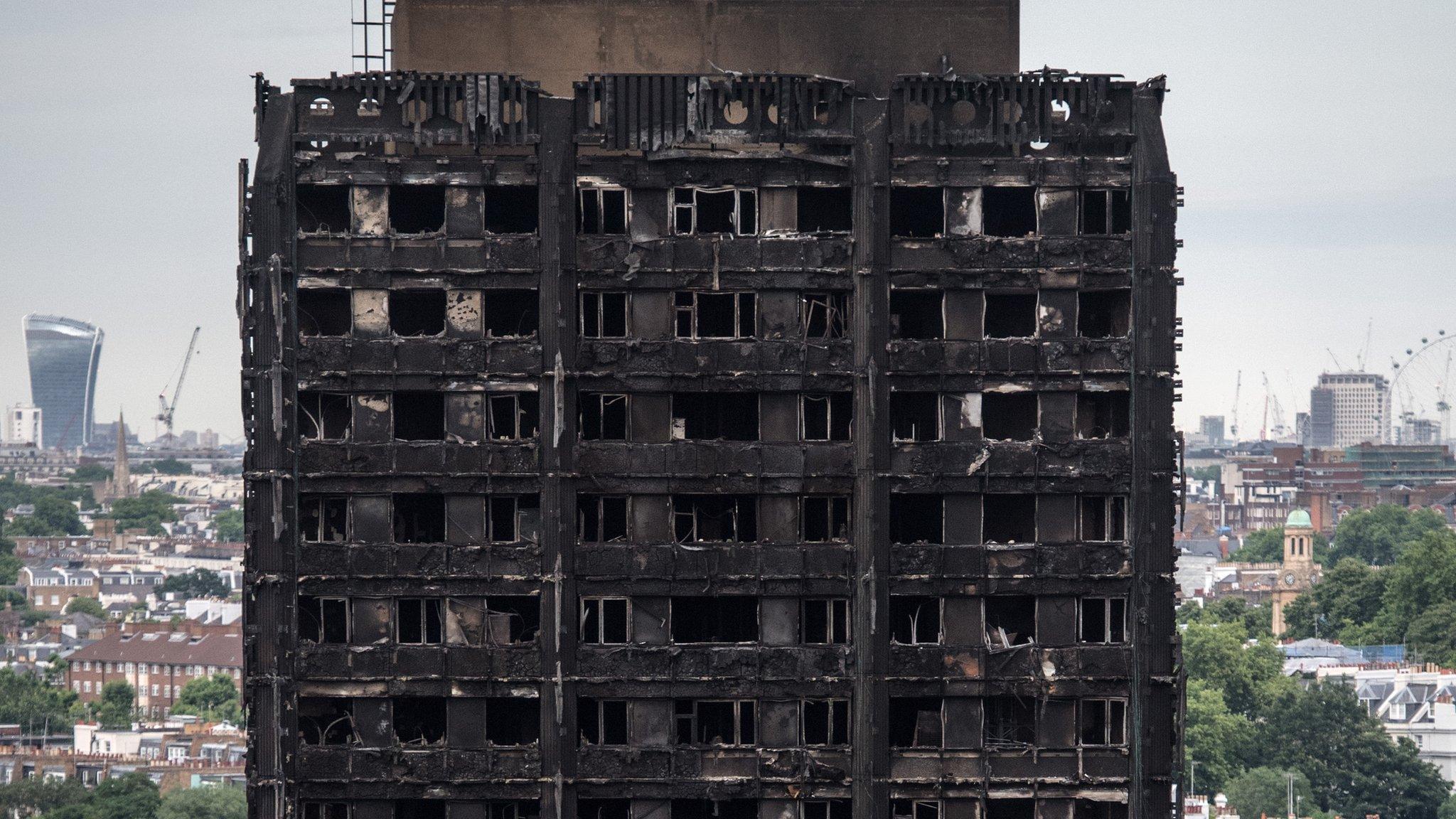
- Published14 June 2017

- Published19 July 2017

- Published19 August 2016
